Breaking Down The Watcher ’s Fantastically Frustrating Conclusion
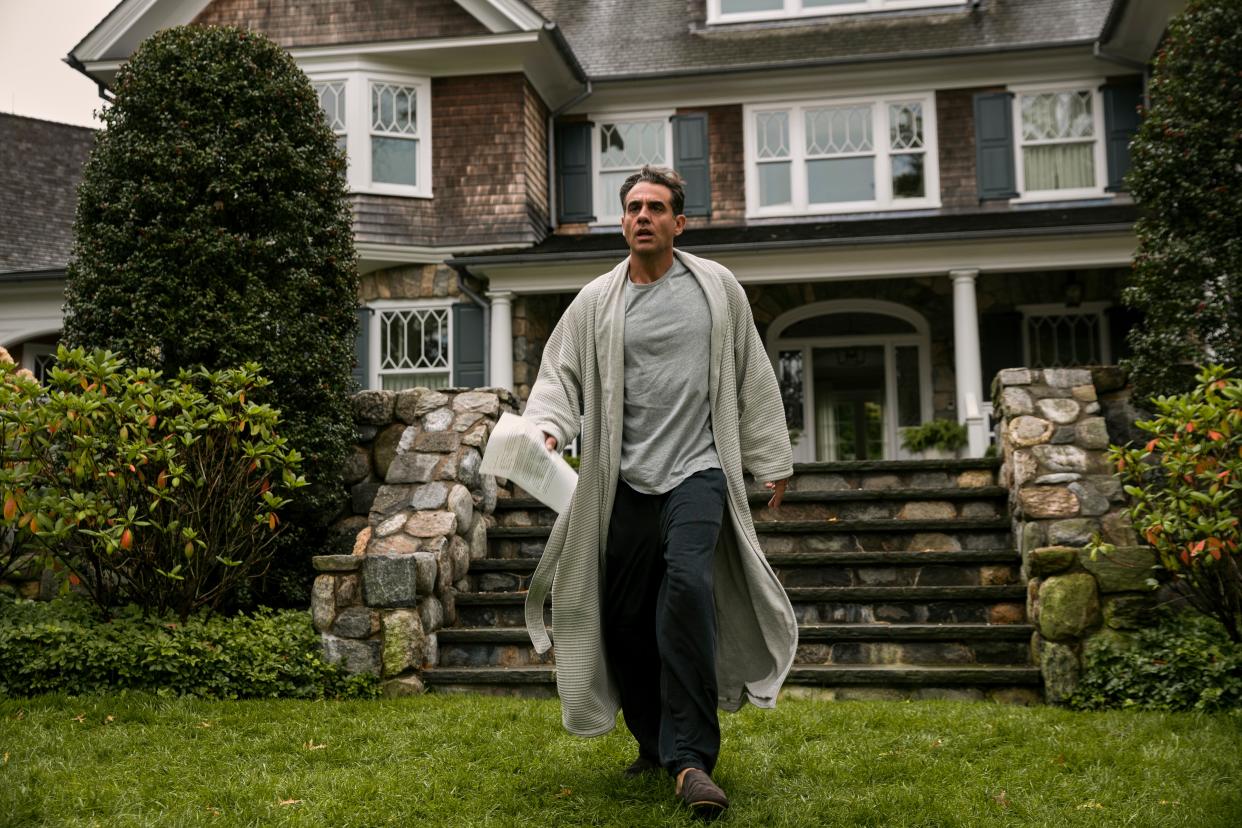
The Watcher. Bobby Cannavale as Dean Brannock in episode 101 of The Watcher. Cr. Eric Liebowitz/Netflix © 2022 Credit - Eric Liebowitz—Netflix
Spoiler alert: This piece discusses major plot points of Netflix’s The Watcher, including the finale.
On Sept. 21, Ryan Murphy unveiled Dahmer—Monster: The Jeffrey Dahmer Story, a true-crime thriller that has since become, depending on your metric of choice, either the biggest success or the exploitative nadir of his Netflix career. Now, just over three weeks later, as the controversy surrounding that show continues to simmer, he’s back with another new true-crime thriller. Time will tell whether The Watcher turns out to be a hit with subscribers (though I’m betting it will be). But after watching all seven episodes, one thing I know for sure is that it’s the first really good drama series Murphy has made since leaving Fox for Netflix in 2018. And that’s thanks in large part to a serpentine plot that lays the groundwork for an exhilaratingly inconclusive finale.
An adaptation of Reeves Wiedeman’s eerie New York magazine article from 2018, The Watcher follows a family that buys a dream home in the wealthy suburb of Westfield, NJ, only to find that someone else has already, in a sense, laid claim to it. In the real-life story, they started receiving typed notes from a correspondent identified only as the Watcher, who claimed to have been watching their property for “the better part of two decades,” as their father and grandfather had done before them. Along with making vague threats centered on the children—or, as the Watcher calls them, “young blood”—in the family, the letters posed such chilling questions as: “Do you know what lies within the walls of 657 Boulevard?” There were plenty of suspicious neighbors, but the local police seemed pretty apathetic, even as weird things kept happening. Eventually, scared out of their wits and facing ever-worsening financial straits, they put the house up for sale. Unsolved when the original article ran, the case remains a mystery in 2022.
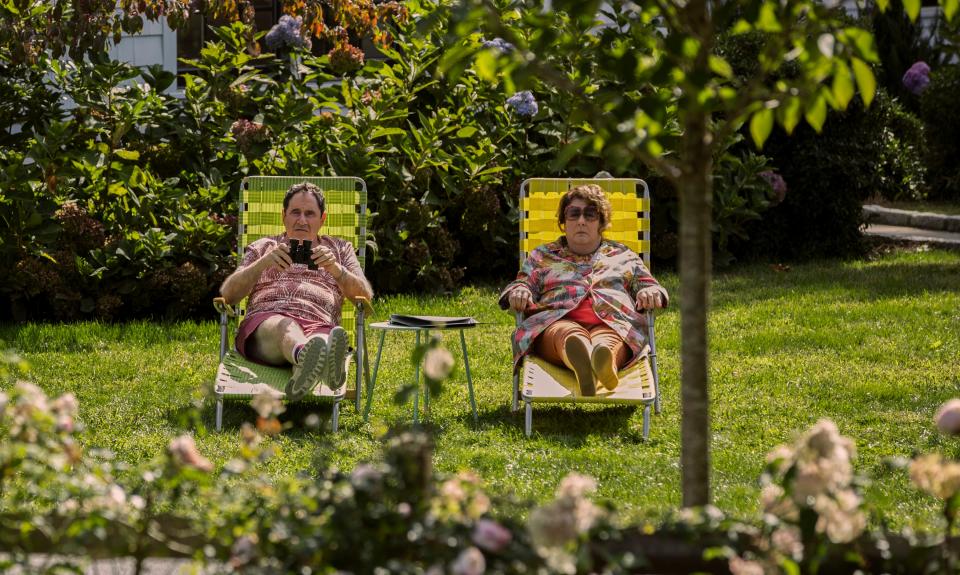
An endless list of suspects
These facts form the skeleton of Murphy and co-creator Ian Brennan’s series, but unlike so many other docudramas, The Watcher breaks early and often from the official record. They alter not just the names of the family, which has already suffered through an unauthorized Lifetime movie called The Watcher, but also the number of kids and their ages. Characters are added, subtracted, composited, and embellished to better serve an all-star cast as well as a plot that examines each suspect in turn. There’s no question that such creative license was necessary (the real family never even moved into the house). And Murphy restrains himself from abusing it with the kind of baroque inanity that makes so many of his recent shows so exhausting.
The Watcher does what good psychological thrillers do: it takes everyday fears to nightmarish extremes. One disconcerting aspect of the article is that, rather than uncovering too few suspects in a town that prides itself on safety, it finds too many. The show magnifies that sense of community dysfunction. Protagonists Nora (Naomi Watts) and Dean Brannock (Bobby Cannavale) and their kids, 16-year-old Ellie (Isabel Gravitt) and her little brother Carter (Luke David Blumm), are surrounded by weirdos. The prickly couple next door, Mitch and Mo (Richard Kind and Margo Martindale, a match made in TV heaven), wear absurd matching outfits, orient their lawn chairs so that they’re staring directly at the Brannocks’ house, and brazenly harvest arugula on the family’s property. Elsewhere in the neighborhood, historical-preservation control freak Pearl (Mia Farrow) takes the Brannocks’ interior design choices personally, while her emotionally disturbed brother Jasper (Terry Kinney) hides in their disused dumbwaiter. Then there’s real-estate agent Karen (Jennifer Coolidge, maintaining her post-White Lotus Jenaissance momentum), an old classmate of Nora’s who espouses a sort of demented-girlboss wealth gospel and seems overly eager to earn a second commission by reselling the house.
A private investigator, Theodora Birch (Noma Dumezweni), whom the Brannocks hire on the advice of a dismissive police department, digs up even more suspects. The cast swells. Former 657 owner Andrew (Seth Gabel) spews au courant adrenochrome conspiracy theories. A 19-year-old home-security entrepreneur, Dakota (Henry Hunter Hall), allows himself to be seduced by Ellie. A local teacher, Roger (Michael Nouri), is known for having his students write anonymous letters to Westfield homes they love. Theodora brings news of a patriarch who slaughtered his wife and kids in the house, then disappeared, in the ‘90s. The possibility arises that Dean invented the Watcher because he doesn’t want to admit to Nora that they really can’t afford the $3 million mansion. And so on and so forth into buyer’s-remorse oblivion.
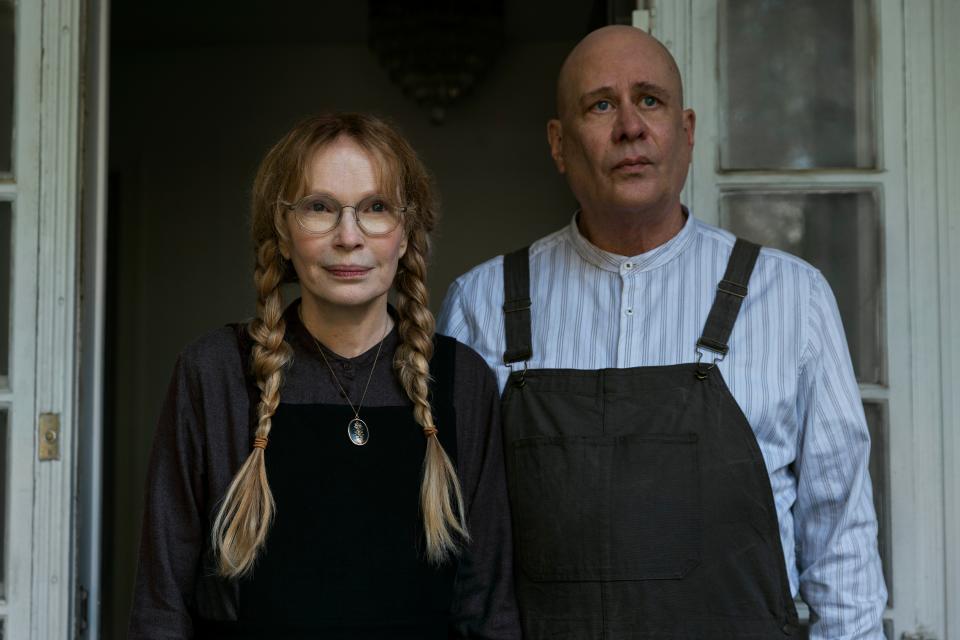
Every character is a little bit guilty
That the real Watcher has never been apprehended might seem like a liability, but it actually becomes an asset. Instead of inventing a pat conclusion, Murphy and Brennan capitalize on the shaggy-dogness of it all. While the big mystery never gets solved, little ones often do—in ways that only make the letters seem like less of an anomaly. Episodes after we, and the Brannocks, watch paramedics haul away two bloody bodies from Mitch and Mo’s house, it turns out they were just out of town; their troubled adult son faked their deaths. Dean admits to sending a single note, but not the original ones. Then he gets fired because someone sends his boss a video of a strange woman slipping into bed with Dean. We know it was Dakota because he admits to it, before realizing he has no idea how the woman in the footage got into the house.
In other words, everyone is at least a little unhinged, and most have done something awful—including the Brannocks. Dean allows the stresses of his career and new home to gradually transform him into the prototypical rich, white, conservative suburban dad. Fixated on his daughter’s nascent sexuality, he sics the cops on Dakota, who is Black, even though she’s past the age of consent and it’s perfectly legal for the two of them to date. When Dean tries to confront Mo about Andrew’s claim that his three-year-old son walked in on her, Mitch, and a cabal of the town’s elders sacrificing a baby in the basement of 657, she rightly equates the accusation with the deranged conspiracy thinking of QAnon.
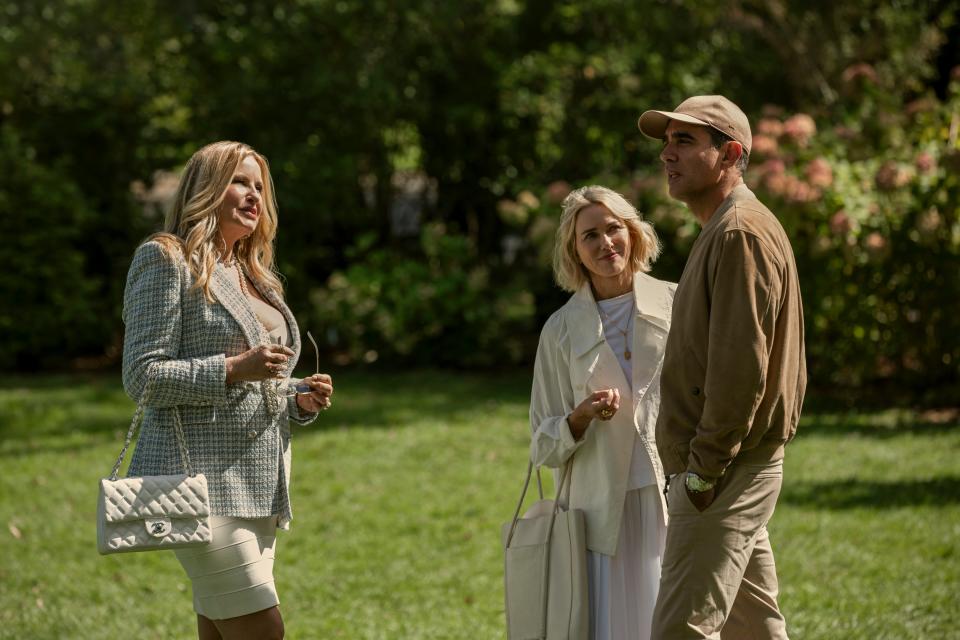
What’s the matter with Westfield?
Not that The Watcher is just a commentary on conspiracy theories. It’s about the broader, ambient paranoia of contemporary American life. The Brannocks spend a fortune on security and surveillance, but it only ends up eroding their sense of safety even further. Theodora, a former jazz singer, got so obsessed with true crime that she began a second career as a P.I. to distract her from a cancer diagnosis. Moreover, the show repeatedly confirms that people have reason to be afraid—although there’s rarely a connection between the object of their fears and what’s actually threatening them. The man who may or may not be John Graff (Joe Mantello) lectures Dean about church, female purity, and an alarmist theory that predicts the country is due for a generational crisis. But Graff, if he exists at all, is a psychotic killer who murdered his entire family, and thus obviously posed a far greater threat to them than atheists or teen sex.
Regardless of his relationship to reality, Graff embodies something genuinely dark within Westfield: an aging community’s simultaneous fetish for youth (a.k.a. “young blood”) and resistance to change (i.e. historical preservation). This is what makes the place such a culture shock to a family that has just relocated from New York City. Murphy and Brennan pay conspicuous homage to Rosemary’s Baby, from Farrow’s presence on the other side of the young-old binary to the basement baby sacrifice to the name Dakota shares with the Upper West Side building where Roman Polanski’s horror classic takes place. The Watcher is in part a reversal of that movie; it’s the suburbs that feel strange and sinister to people used to living in the city. There are political implications here, in an era of blue cities and red suburbs. But the show complicates that dynamic, too, when the Brannocks move back to Manhattan and find the subway messed up for hours one day because someone pushed two people onto the tracks.
There’s more thematic resonance where all of the above comes from, including the stuff that sits right on the surface, like money, real estate, women working for creative fulfillment vs. women working to get paid. This kitchen-sink approach to the making of meaning has often been Murphy’s downfall. His shows usually turn the artifice up to 11, then preach liberal bromides at the same volume, and it all becomes too noisy to enjoy. The Watcher, with its muted, Restoration Hardware color palette and naturalistic performances, communicates in a quieter register. And its surplus of ideas about what’s wrong with America right now—specifically, what’s wrong with white people in America’s suburbs right now—works because, well, everything is wrong.
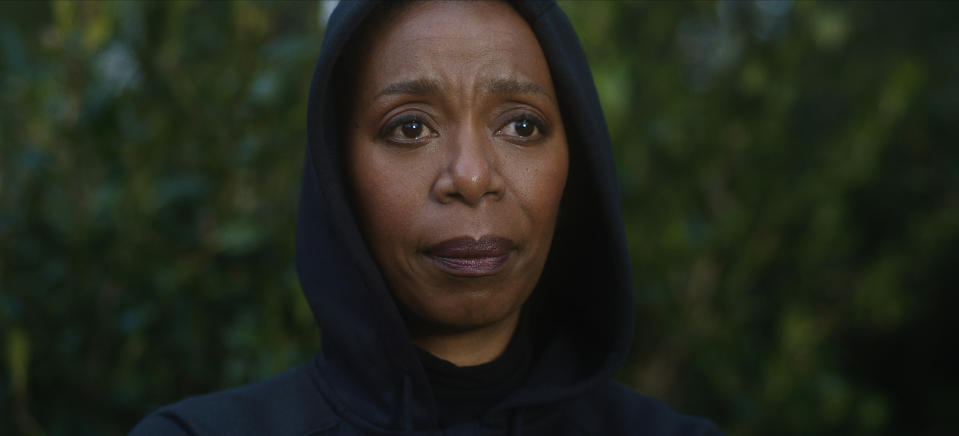
Breaking down The Watcher finale
Which brings us to the show’s appropriately frustrating finale, whose series of fake and partial conclusions leave us no closer than we ever were to identifying a single guilty party. First there’s the compelling tease of Theodora’s own confession. She casts herself as the house’s previous owner and says that she sent the letters, invented the Graffs, reverse-engineered the Watcher based on her own knowledge of the town’s quirks. “This was never about you, Dean,” she tells him on her deathbed. “You’re a good man with a wonderful family. It was about the house. It was such a good house.” Alas, this isn’t The Usual Suspects; the storyteller, which is what every detective really is, isn’t secretly the culprit. As Theodora’s daughter explains at the funeral, she was just trying to free the Brannocks from what had become self-perpetuated torture—and Dean believed her, at first, because he was so convinced of the house’s irresistible allure.
In a subsequent ending, Karen finally schemes her way into the house, only to be quickly driven out by a flooding bathtub and the murder of her dog. Maybe this means that she was the Watcher—and maybe Nora, who appears in Karen’s foyer to repeat that accusation, is responsible for one or more of the incidents that cause her to flee. Either way, a new family moves in and finds itself surrounded by neighborhood weirdos (who, in a plot point that’s either damning or kind of moving, have now found each other through Pearl’s historical preservation group). In the series’ final moments, we see them all in turn, plus Andrew, staring at 657 and its latest owners. Then Dean is there, too, though he introduces himself to his successor as—yikes—John. He calls Nora before heading home, but when he drives off, we see that she’s been trailing him the entire time.
Like the real case, The Watcher technically leaves its mystery unsolved. We don’t find out who sent those initial letters. If you were expecting a traditional whodunit, that’s exasperating. But we do learn a lot about the Brannocks and their neighbors. These admittedly broad, thin characters serve, individually, as metaphors for the contemporary plagues of surveillance, competition, greed, jealousy, bigotry, paranoia. Collectively, they’re a microcosm of a culture that tells us to mortgage every aspect of our lives in order to attain the trappings of wealth. So it makes sense that, on a thematic level, everyone is the Watcher, even largely well-meaning people like Theodora, in this panopticon of a society. And everyone is doing something they wouldn’t want anyone else to see.

